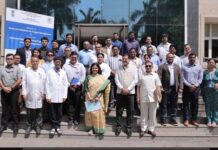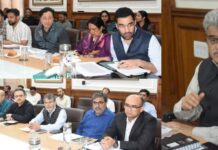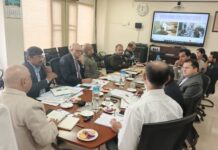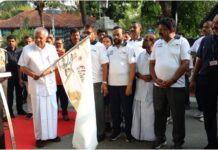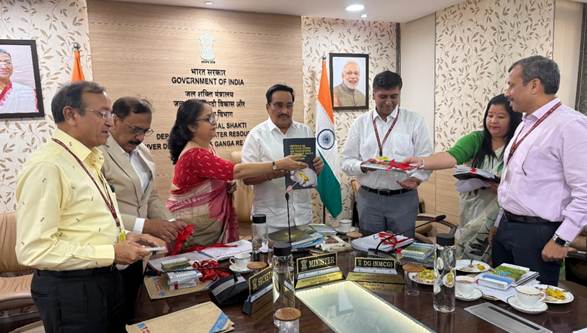APRIL 17 : Union Minister of Jal Shakti, Shri C. R. Patil, chaired a review meeting in New Delhi to assess key projects implemented by the Wildlife Institute of India (WII) under the National Mission for Clean Ganga (NMCG). Senior officials from the Ministry and WII were present for the review, which focused on ongoing efforts to conserve and restore aquatic biodiversity in the Ganga River Basin.
The Minister praised the impactful work of NMCG and WII in improving river health, engaging communities, and building local capacities through science-based conservation strategies. He particularly acknowledged the extensive outreach initiatives, including the contributions of “Ganga Praharis” — trained volunteers dedicated to biodiversity conservation. Shri Patil proposed the organization of a Ganga Prahari Conclave to further strengthen engagement with these grassroots volunteers and suggested expanding conservation efforts to include the Mugger crocodile.
During the session, Shri Patil unveiled a series of knowledge resources developed by WII and NMCG. These included two volumes titled Hydrophytes: Green Lungs of Ganga and a technical guide on the Protocols for Collection, Storage, and Transportation of Biological Samples of Freshwater Macrofauna. These publications underscore the scientific foundation and field relevance of the Ministry’s conservation efforts.
The review highlighted WII’s structured six-pronged conservation model, which encompasses setting up a dedicated conservation monitoring centre, developing species restoration plans, building institutional capacity, establishing rescue and rehabilitation centres, community-driven conservation initiatives, and promoting biodiversity education.
Community involvement remains central to this strategy. Over 130 capacity-building programs have trained thousands of stakeholders including forest officials, teachers, veterinarians, and NSS volunteers. Notably, more than 5,000 Ganga Praharis, many of them women, have been actively involved in monitoring biodiversity, assisting in rescue efforts, and spreading awareness at the grassroots level.
Technological innovation has also played a vital role, with a large-scale survey covering over 12,000 kilometers across 22 rivers. This effort utilized GPS-enabled tools, SONAR depth profiling, and real-time ecological monitoring applications. Additionally, Project Dolphin continues to support the conservation of river dolphins and their habitat while encouraging local eco-tourism for livelihood enhancement.
The meeting concluded with a collective resolve to strengthen inclusive, science-led, and sustainable conservation of freshwater ecosystems through continued collaboration between the Ministry of Jal Shakti and WII.


